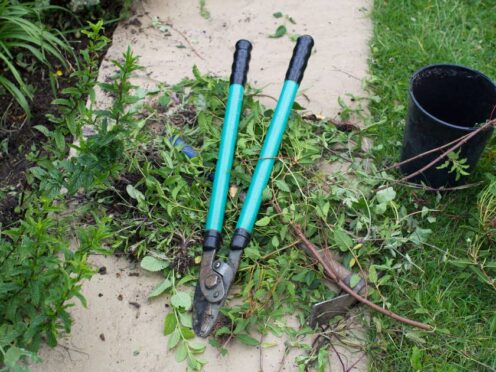
Experts suggest gardeners can “chop and drop” garden clippings into flowerbeds as part of a range of ways to save money and be more sustainable.
The direct way of recycling nutrients or “fertility” in the garden saves money on buying compost, and time and effort compared with having a compost heap, horticulturalists said.
And saving vegetable seeds for growing the following year, taking cuttings from clippings of lavender and hydrangeas and using pruned branches to avoid having to buy plastic supports could all reduce gardening costs.
At a Royal Horticultural Society’s (RHS) conference, experts also highlighted the need for gardeners to capture water and conserve healthy soils in their gardens to save money and help the environment.

Anya Lautenbach, author of the Money-Saving Gardener, said people could be looking at gardening from a different angle, asking: “What can you use that’s available in your garden, almost like looking at your garden as a garden centre.”
Gardeners could reuse tree or shrub prunings as plant support and use grass cuttings as mulch for lawns, while one leggy lavender bush or hydrangea could be used to create many others through propagation.
Lucy Hutchings, “She Grows Veg” influencer, author and edible garden designer, said growing food from seed can save money, with premium items in the shops such as globe artichokes and heirloom tomatoes “super easy” to grow from seed.
She said: “Organic food is a luxury item in supermarkets, it should really be a basic human right to eat food that is chemical free, but it’s easy to garden with organic principles in your own garden because you’ve got complete in control over what you put on the plants.”
She also suggested changes to the way people harvest veg, cutting the outside leaves off leafy greens and chopping spring onions rather than pulling them up to provide more produce, and letting vegetables bolt to provide seed for the following year.
Sheila Das, garden manager of RHS Wisley, said of the tips from the experts: “The win-win is you can save money on an individual basis, but also a lot of these practices are just really helpful practices for being sustainable.”
And she said: “Making your own compost is something that we often talk about in terms of helping to save money, because compost is expensive, it’s difficult to manoeuvre, not everyone can get hold of it.”
She said there was a need to shift mindsets from buying “fertility” from elsewhere, instead using what was already in the garden.
“Chop and drop is another way to compost, it’s just without necessarily picking everything up, taking it over there, putting it into a heap, maybe turning it over or aerating it, and then bring it back.
“Actually what you can do is just chop down your plants,whenever you want to do that, ideally leaving them standing as habitat over the winter, so you get to the early part of the following year, and chop them up into little bits and let them fall on the bed.”

She said everything in nature feeds itself locally, and so if gardeners replicated that they would not only save money from not buying expensive mulches, but also save effort and time.
Ms Das also warned people to “cherish soil” and if they were having any building work done not to let their topsoil be taken away, as “you can find a use for it without question”.
She added there was a need to call it soil instead of muck or dirt to value it, “you start to think about soil as a living breathing thing that helps us to grow and to regenerate.”
She also said healthy soil would allow people to catch water in their gardens, describing it as the “biggest water butt on Earth”.

Enjoy the convenience of having The Sunday Post delivered as a digital ePaper straight to your smartphone, tablet or computer.
Subscribe for only £5.49 a month and enjoy all the benefits of the printed paper as a digital replica.
Subscribe